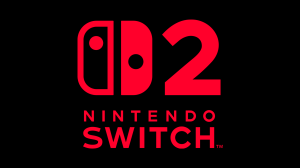Channelling dystopian YA fiction and trading tights for functional flight suits, Green Lantern: Earth One is a cleverly realized, gorgeously-illustrated work that sacrifices wonder and spectacle on the altar of mass appeal.
Videos by ComicBook.com
Written by Corinna Bechko and Gabriel Hardman, with art by Hardman and colors by Jordan Boyd, Green Lantern: Earth One is the latest in a line of original, hardcover graphic novels from DC created with an eye toward the growing bookstore market and potential exploitation in other media.

The story starts out promisingly: it is the near future, and Hal Jordan is no jet-jockey test pilot but a deep space miner, competing for lucrative and dangerous jobs off-world.
The characterization is strong, with Jordan and his fellow astronauts each having distinctive voices and personalities in spite of relatively little time actually given to most of them in-story. Hal is one of a pair of miners who go off book and explore the wreckage of a space craft, upon which he finds the corpse of a Green Lantern (identifiable to comic book fans as Abin Sur, but never introduced on the page) and the hulking, damaged shell of a Manhunter robot.
The design work is both inspired — Hardman’s draftsmanship is unassailable, and it is clear that he and Bechko have put a lot of thought into the world they are introducing here — and original. It blends familiar elements of the Green Lantern mythology with a kind of hard-edged pseudo-realism that would feel at home in the pages of 2000AD. The Manhunters feel something like a Generation One Optimus Prime, if Optimus Prime were soulless and constantly hurtling around pelting things with blue energy.
The pacing, though, is uneven; when characters are interacting, the likable personalities and believable dialogue move the story right along. When the story is being driven by plot, there are quiet stretches more reminiscent of Gravity than superhero stories, and the book is not always well-served by them. The air can be sucked out of even some decent action scenes with wordless images which, while gorgeously rendered, do not necessarily flow as well as one might hope. Occasionally, these slow-moving scenes are punctuated by a hard scene transition that can be particularly jarring.

Fans of YA dystopias or Star Wars movies will be fairly familiar with the structure here: near future, tech-dependent human plunged into an analog world against his will and brutalized by bloody-minded powers-that-be. Despite his disadvantage in numbers and technology, he manages to assemble a respectable resistance and make serious headway against his foes.
The audience is fed nuggets of information that amounts to something that ultimately feels like just enough information to call it the first act of a trilogy, while the cognoscente will be able to correctly identify characters and concepts from the Green Lantern mythology even though they are not introduced clearly.
Unfortunately, what the book is and what Green Lantern is known for rarely cross paths, and the result is a book that reads like it is apologizing for its source material. The outrageous, outlandish spectacle of the Green Lantern Corps — hundreds of alien beings creating thousands of creative and visually arresting hard-light constructs — is replaced by underground rebels dressed in rags and firing off energy blasts at their opponents. There is nothing inherently wrong with that and, indeed, there is the base of something appealing here. Still, it might as well be a revival of Challengers of the Unknown or Sun Devils or Omega Men. The effect would be materially the same.
While the human astronauts had discernible personalities and felt like they were going to be important, members of the Green Lantern Corps do not. They spend much of the book cowering in the shadows and, when they are finally called into action, they move and behave as a swarm. Visions of Gerard Jones and M.D. Bright’s Emerald Dawn pervade the pivotal battle with the Manhunters. That series, too, reinvented Hal Jordan with a promising start but petered out with an empty fireworks show of a third-act fight against the villain.

Arisia and Kilowog, the two Lanterns to get any kind of depth, are interesting and likable characters in their own right, and given the nature of the Earth One graphic novels, it would be intellectually dishonest to hold against Bechko and Hardman how little they resemble their standard DC Universe counterparts. It opens up a lot of storytelling possibilities down the line, and one can hardly object to teenage sex object Arisia being retooled as a kind of cosmic Octavia Blake, calling out Hal’s male privilege while kicking his ass in the span of about three panels.
Unfortunately, this book feels like it is about five years too late. Bechko and Hardman have done spectacular work in the past, and there are glimpses of brilliance here, but this book feels built on tropes and archetypes who by and large date back to a time before Guardians of the Galaxy and Star Wars: The Force Awakens.
Stripped of the trappings of superhero fiction and the more fantastical elements of the Green Lantern mythology, Green Lantern: Earth One feels a bit like some late ’90s attempt to deconstruct the Green Lanterns by a particularly impressive creative team at WildStorm or Marvel MAX. And, like so many of those deconstructionist works, the elaborate and gorgeous world built here feels hermetically sealed and emotionally distant, more concerned with telling than showing and occasionally quite slow.
Rating: 3/5
Published by DC
On March 14th, 2018 (March 20 in the bookstore market)
Written by Corinna Bechko & Gabriel Hardman
Art by Gabriel Hardman
Colors by Jordan Boyd








